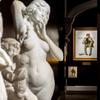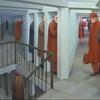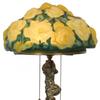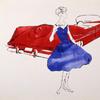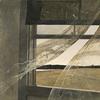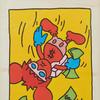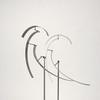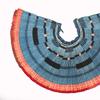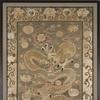Theodore Earl Butler: An American in Monet’s Garden
- August 09, 2019 08:47
Lush gardens and bucolic domestic scenes define significant chapters in Theodore Earl Butler’s career, and indeed, his life. One of the most innovative American painters of his day, Butler showed little restraint in experimenting with light and color — a trait that drew him into the circle of the legendary Claude Monet. His love for outdoor subjects combined with daring risks in technique became foundational to his pursuit of the Impressionist style; it also gave him entrée into one of the art world’s leading families, the Monets.
His affinity for France and French art began at a relatively young age. Born in the Midwest in 1861, Butler arrived in Paris in 1887, entering the prestigious Académie Colarossi and Académie Julian. His celebrity was soon on the rise, and Butler quickly became entrenched in Parisian art circles. Only one year after living in Paris, Butler exhibited at the Paris Salon, where he won an honorable mention for his early work La Veuve (The Window), a massive achievement for any artist and even more significant for an American in Paris.
Butler’s success caught the eye of Impressionist master Claude Monet, who invited the young painter to dine at his private estate in Giverny. Despite receiving hundreds of requests, the reclusive Monet accepted very few visitors into his provincial French home, let alone American guests. Butler seized this life-changing opportunity, becoming one of a handful of artists allowed to paint with Monet in his gardens and one of the few American painters to be welcomed into the reclusive master’s inner circle.
While in Giverny, Butler courted and married Monet’s step-daughter, Suzanne Hoschedé, a favored muse and top model featured in many of Monet’s masterpieces. The couple’s Champagne-filled nuptials were immortalized by Theodore Robinson’s 1892 painting The Wedding March. During their brief but blissful marriage, Butler and Hoschedé settled in a Giverny orchard and welcomed two children, Jimmy and Lilly Butler.
The joyous period of Butler’s life between his first marriage and the birth of his children would be the most gratifying years for the artist, apparent in the many domestic scenes he painted involving his children, wife, and the French countryside. Monet’s influence on his son-in-law is unquestioned in Butler’s work produced through the 1890s, evidenced by saturated, pastel-dominant color palettes. One can imagine the two artists spending many hours together painting, gardening, and simply enjoying a private life devoted to family.
Six years into their marriage, Suzanne succumbed to a lingering illness, leaving Butler a widower with two young children to raise. Devastated by the loss of his wife, Butler briefly returned to the United States, and Suzanne’s younger sister Marthe stepped in to help care for Jimmy and Lilly. While stateside, Butler exhibited at several solo shows, including one at French art dealer Paul Durand-Ruel’s gallery in New York. Within six months, however, Butler was back in Giverny. Upon returning to France, Butler married another of Monet’s step-daughters, Marthe Hoschedé, further solidifying his family ties to the founder of French Impressionism.
After the passing of Suzanne, Butler focused almost entirely on landscapes and playing with light sources. He continued to produce work throughout his lifetime, but no longer would his paintings depict sentimentality in the warm, domestic themes of his earlier life in France. In 1914, Butler relocated his entire family to New York City, when he was commissioned to paint murals in the home of investment banker William A. Paine. Here, he briefly broke away from rural landscapes and began experimenting with frenetic, urban scenery. The outbreak of World War I barred the Butlers from returning safely to France, keeping the family a fixture of New York art society for the duration of the war.
When Butler returned to Giverny in 1921, he established his own lush gardens inspired by those of Claude Monet. His Giverny estate was known as an open and hospitable country respite for American artists in France, and until his death in 1936, Butler remained true to his legacy as a binding force between American and French artists. In his late work, Butler experimented freely with Fauvist principles, often applying his electrifying hues directly from the tube to create the dynamic movement characteristic of his scenes. His heavy brushwork aligned him with Post-Impressionist artists like Paul Gauguin.
M.S. Rau is proud to offer Plum Tree in the Artist’s Garden, an important painting composed in Butler’s twilight years. To view this work and other great Impressionist masterpieces, click here.
About M.S. Rau Antiques:
M.S. Rau has spent over 100 years earning the trust of discerning collectors worldwide. Located in the heart of New Orleans’ historic French Quarter, our peerless showroom houses one of the world’s most extensive and stunning collections of museum-quality fine art by artists such as Claude Monet and William Bouguereau, 18th- and 19th-century antiques, and breathtaking jewelry, including rare colored diamonds.

